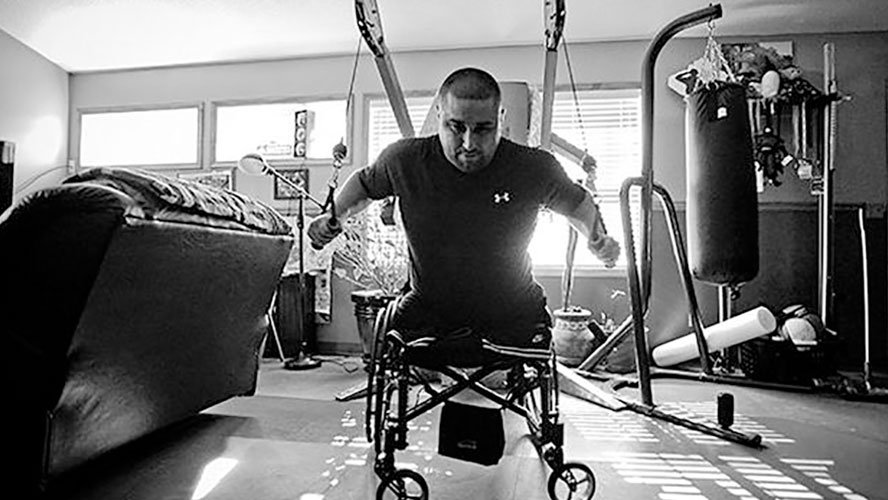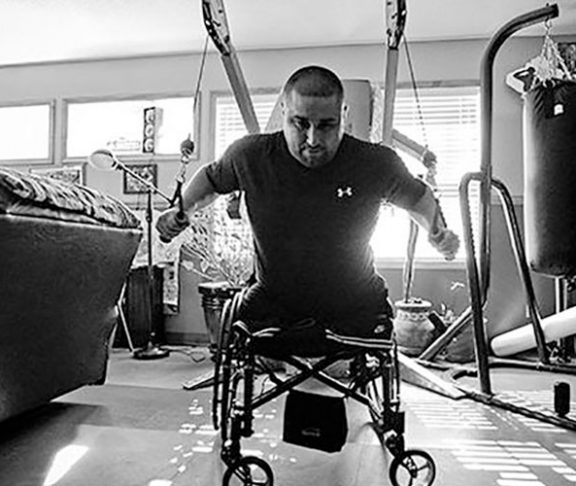After 9/11, America’s children lined the streets of military recruiting stations to join ranks with others who swore to defend this great nation at all costs. Shane Parsons was one of those warriors; he joined the Army infantry directly after high school.
Life on the line
While deployed to Iraq in 2006, an improvised explosive device detonated near Shane’s Humvee. Although ready to sacrifice his life for his country, Shane survived catastrophic injuries, including cardiac arrests, severe traumatic brain injury, post-traumatic stress disorder and above-the-knee bilateral amputations.
Shane spent the following years relearning adolescent motor and cognitive skills and pushing through the physical and emotional pain to focus on his new mission in life: recovery. Never did he imagine where that journey would take him.
New possibilities
In 2007, Shane became active in adaptive sports. His passion started with hand cycling, then moved into wheelchair basketball and football, and finally to sled hockey. Through adaptive sports, Shane was able to strengthen his muscle movement and endurance, which was limited by his wheelchair. Shane was active, motivated and achieving his goals.
“As an amputee, I try to make the best of it,” Shane said. “I focus on what makes me stronger. I’ve learned to overcome and never give up. I’m grateful to be alive — to have a second chance at doing life better.”
Renewed camaraderie
The sports clinics and tournaments introduced camaraderie to his life outside the military service by connecting him with other veterans with similar injuries. The warrior support that plays a critical role on the battlefield has the same function in recovery at home. When warriors stumble, fall or become injured, it’s the warriors marching next to them who will pick them up and carry them on their shoulders.
“You can’t do recovery alone,” Shane said. “I’ve got the best family and friends you could ever ask for, and my second family at Wounded Warrior Project is really second to none.” With a strong support structure around him, Shane defied limitations and redefined possibilities.
James Herrera, Director of Physical Health and Wellness, Wounded Warrior Project, [email protected]

